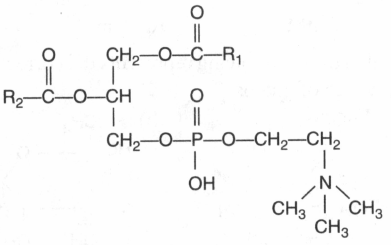Biomolecules in the Cell: Lipids
Biomolecules in the Cell: Lipids: Overview
This topic covers concepts such as Lipids, Simple Lipids, Compound Lipids, Glycolipids, Phospholipids, and Derived Lipids.
Important Questions on Biomolecules in the Cell: Lipids
Blood capillaries are made of
Following are the statements with reference to lipids:
A. Lipids having only single bonds are called unsaturated fatty acids.
B. Lecithin is a phospholipid.
C. Trihydroxy propane is glycerol.
D. Palmitic acid has 20 carbon atoms including carboxyl carbon.
E. Arachidonic acid has 16 carbon atoms.
What are the differences between lipids and fats.
Which of the following statements is not correct regarding lipids?

The true statement about the above structure is
Triglycerides are fatty acids esters of glycerol. They are formed by esterification of …A… molecule(s) of fatty acids with …B… molecules(s) of glycerol:
What does a glycolipid consist of?
What are examples of glycolipids?
What is the main function of glycolipids?
The reason for the ketogenesis is:
What is PUFA? Write its significance.
Which one of the following is NOT an unsaturated fatty acid?
Which of the following is used for long term energy storage by animals
Which of the following is used for staining of lipids?
